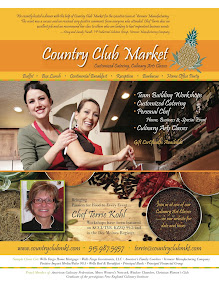What’s the best thing to do on an extremely sunny, fiery hot, Italian summer day? Visit a place where wood is charred to perfection using art, skill, and science. What you ask is that place? It is none other than Gamba.

Located in the heart of Monferrato, in a place called Castell’ Alfero d’ Asti, Gamba is one of the most prestigious barrel makers in all of eastern Europe. Since the 1800’s the Gamba family has been perfecting their skill over seven generations. Master coopers, Eugenio Gamba and his son Mauro Gamba continue their fami
ly’s heritage maintaining the level of perfection from traditions handed down and using new technologies to push the envelope for barrel
and cask design and creation.
Within moments of stepping off our nicely air conditioned bus, I realized today was going to be one of the hottest of the week. In the lot of Gamba’s establishment one can smell the faint aroma of sawdust and hear the whisper of sanders and saws. As the sun beat down on our bodies and the “summer snow” of the cottonwood trees teased us of cooler days past, Mauro Gamba began to bring us into his world of flame and oak.

In the front of this seemingly simple building, lay piles and piles of old gray-looking wood. To my surprise, this tired lumber laying here was, actually, going through an essential aging process. You see, oak, just like the skins of red wine, has tannins in it. To lessen these tannins and develop the flavor profile of the oak, i
t must be aged for a minimum of three years. During aging, the rain wets and sun dries the wood. Strangely, this vital process imparts vital development of wood character. Just as any food item needs to be flipped to evenly cook, pallets are flipped upside down for about half the aging to ensure even cooking.
Wood used in these barrels comes from the finest oak trees harvested from the center of France. Young oak, as one could guess, can be harsh, green, and bitter in flavor. That fact makes old, 160-170 year old plants sought after. At Gamba, not only is each barrel made from the best wood, but staves are made by splitting the wood rather than cutting it (except for large casks where wood must be sewn together). This method is laborious, but makes a higher quality stave, in that it maintains the fiber of the wood. At Gamba, the staves are treated with respect and care, even bending them is done in the least invasive way. Wood can be bent either by fire or water. Fire produces thinning of the staves, so Gamba uses water to maintain the thickness and quality.

After the wood is split, cut, and bent, the barrels are assembled. Saves are put together, sealed with a paste, and held in place by rings. Before we go further, I just want to talk about this paste. On the day we toured, Gamba just happened to be making Kosher barrels for the making of kosher wine. You might be asking yourself what on earth is different in kosher barrel from a non-kosher barrel. The answer is found in the paste. In a regular barrel this paste, which acts as a sealant, is made of ash, flour, and water. However, in Kosher barrels the paste is made of ash, honey, and water. Mauro told us that Gamba is the leading producer of kosher barrels. Who would have thunk?
Ok, back to making barrels . . . . Where were we? Split . . cut, bent, and . . . aw yes, held together by rings. To this a hand forged ring is placed around the staves then pressed tightly into place by a giant machine.
What’s next? The part we have all been waiting for, the toasting. Back in a small dark room, lit by the glow of flames and the glimmers of sunlight, is the toasting room. Here, barrels, like loaves of bread, are baked to perfection by coopers and their small pots of fire. Take a look at the video below to see how barrels are made and listen to Mauro explain the most important parts of toasting. This room was my favorite of this tour. It smelled just like bakery, sweet and warm, nutty and delicious. It isn’t any wonder that these barrels flavor the best wines when their aromas are so delectable.
When one looks around this small building, it is amazing to think that the men here produce so many barrels and casks for so many wine makers across Europe. Just about everything here is done by hand, or with limited assistance from a machine. It just goes to show you that even after seven generations, hand crafted details are what make this piece of artwork superior. The blend of technology and tradition here is astounding!

Over the past three years of studying wine at Johnson & Wales, they have stressed that barrels are like spices and a wine must have a strong fruit backbone to be able to be seasoned with these spices. Visiting Gamba really hit home how a barrel acts like a tea or spices that are steeped in a liquid, only instead of being steeped within they double as a vessel that holds the liquid. Along with that clearer understanding, experiencing the aromas given off by these newly toasted barrels cause a sort of sensory discovery. I can better understand what oak can impart now that I know what oak’s aromas really are.
So my friends, go burn some oak, or at least grill some oak or just sniff a tree and see what you can sense. It’s amazing to know the ingredient that makes so many great wines taste nutty, dark, and chocolaty.







0 comments:
Post a Comment